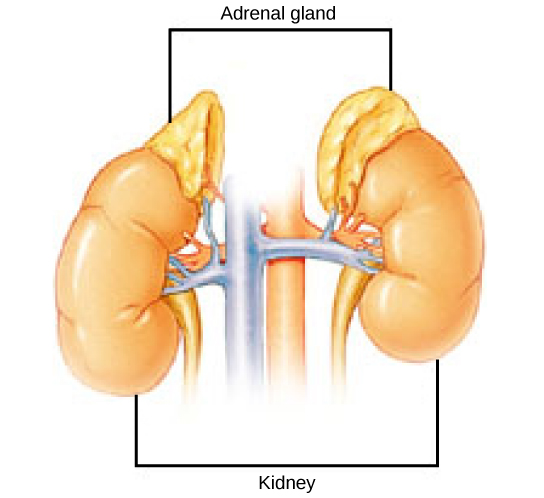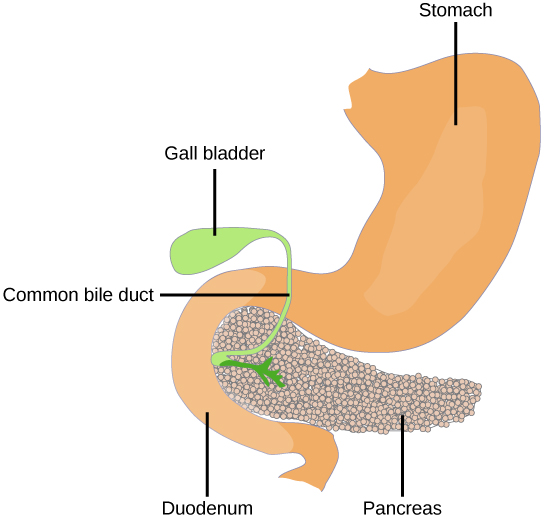| << Chapter < Page | Chapter >> Page > |
The adrenal glands are associated with the kidneys; one gland is located on top of each kidney as illustrated in [link] . The adrenal glands consist of an outer adrenal cortex and an inner adrenal medulla. These regions secrete different hormones.

The adrenal cortex is made up of layers of epithelial cells and associated capillary networks. This gland produces mineralcorticoids, glucocorticoids, and androgens. The main mineralocorticoid (a class of steroid hormones that regulate salt and water balance) is aldosterone, which regulates the concentration of Na + ions in urine, sweat, pancreas, and saliva. Aldosterone release from the adrenal cortex is stimulated by a decrease in blood concentrations of sodium ions, blood volume, or blood pressure, or by an increase in blood potassium levels.
The three main glucocorticoids (steroid hormones that regulate glucose metabolism) are cortisol, corticosterone, and cortisone. The glucocorticoids stimulate the synthesis of glucose. and can also enhance gluconeogenesis (conversion of a non-carbohydrate to glucose) by liver cells. They also promote the release of fatty acids from adipose tissue. These hormones increase blood glucose levels to maintain levels within a normal range between meals. These hormones are secreted in response to ACTH, and levels are regulated by negative feedback.
Androgens are sex hormones that promote masculinity. They are produced in small amounts by the adrenal cortex in both males and females. They do not affect sexual characteristics and may supplement sex hormones released from the gonads.
The adrenal medulla contains two types of secretory cells: one that produces epinephrine (adrenaline) and another that produces norepinephrine (noradrenaline). Epinephrine is the primary adrenal medulla hormone accounting for 75 to 80 percent of its secretions. Epinephrine and norepinephrine increase heart rate, breathing rate, cardiac muscle contractions, blood pressure, and blood glucose levels. They also accelerate the breakdown of glucose in skeletal muscles and stored fats in adipose tissue.
The release of epinephrine and norepinephrine is stimulated by neural impulses from the sympathetic nervous system. Neural impulses, originating from the hypothalamus in response to stress, release these hormones to prepare the body for the fight-or-flight response.
The pancreas , illustrated in [link] , is an elongated organ that is located between the stomach and the proximal portion of the small intestine. It contains both exocrine cells that excrete digestive enzymes and endocrine cells that release hormones. It is sometimes referred to as a heterocrine gland because it has both endocrine and exocrine functions.

The endocrine cells of the pancreas form clusters called pancreatic islets or the islets of Langerhans , as visible in the micrograph shown in [link] . The pancreatic islets contain two primary cell types: alpha cells , which produce the hormone glucagon, and beta cells , which produce the hormone insulin. These hormones regulate blood glucose levels. As blood glucose levels decline, alpha cells release glucagon to raise the blood glucose levels by increasing rates of glycogen breakdown and glucose release by the liver. When blood glucose levels rise, such as after a meal, beta cells release insulin to lower blood glucose levels by increasing the rate of glucose uptake in most body cells, and by increasing glycogen synthesis in skeletal muscles and the liver. Together, glucagon and insulin regulate blood glucose levels.

Notification Switch
Would you like to follow the 'Principles of biology' conversation and receive update notifications?